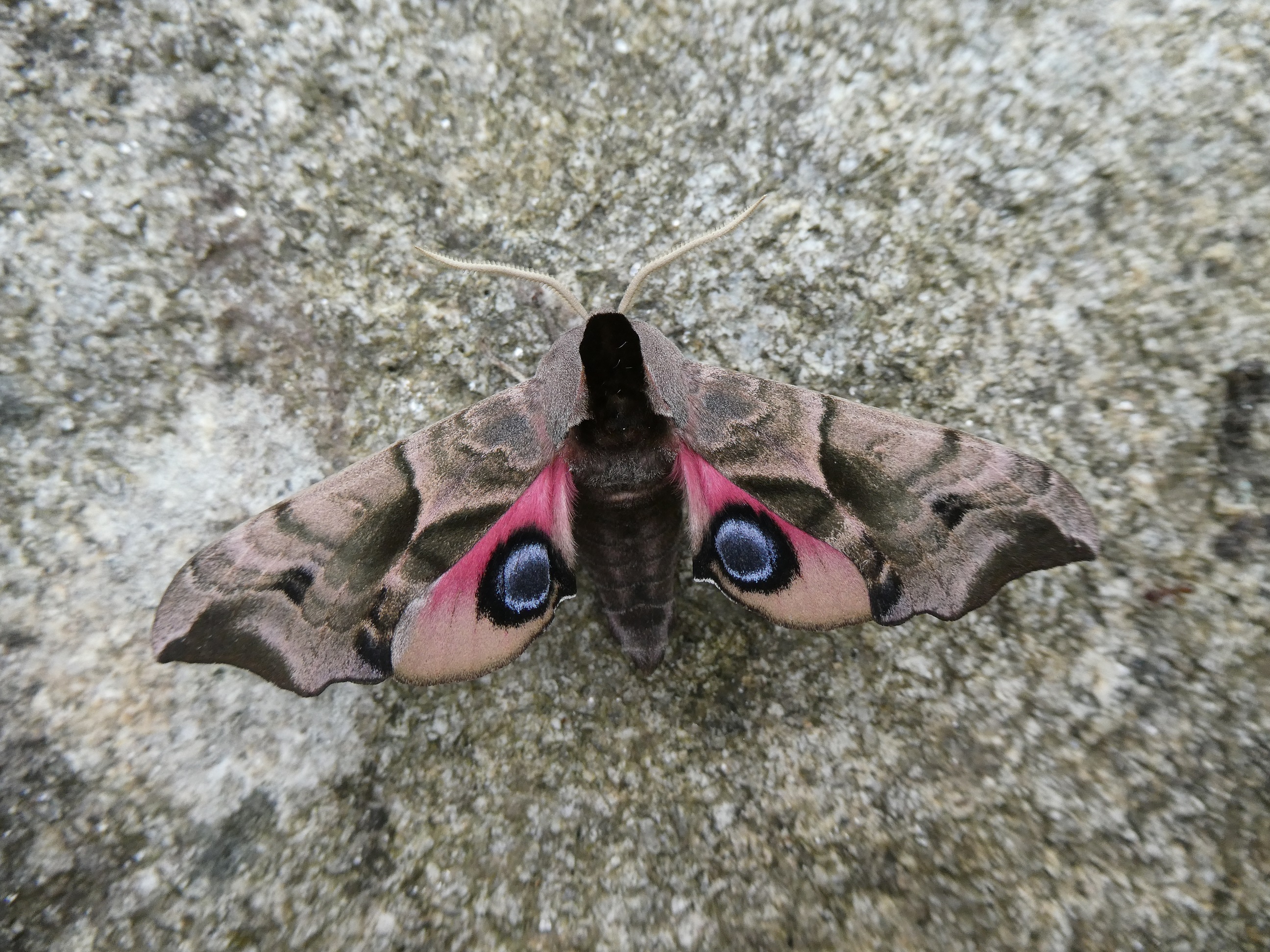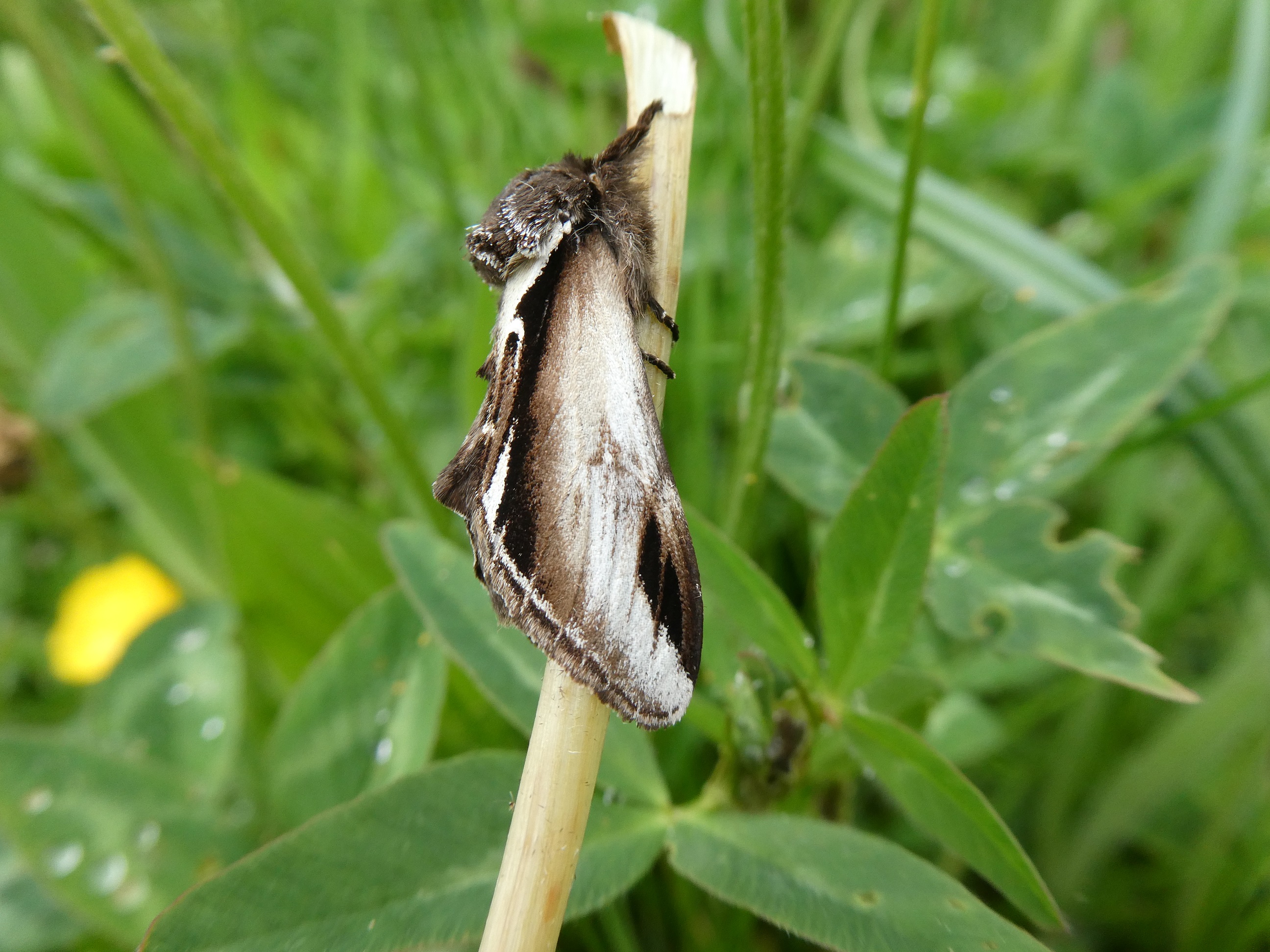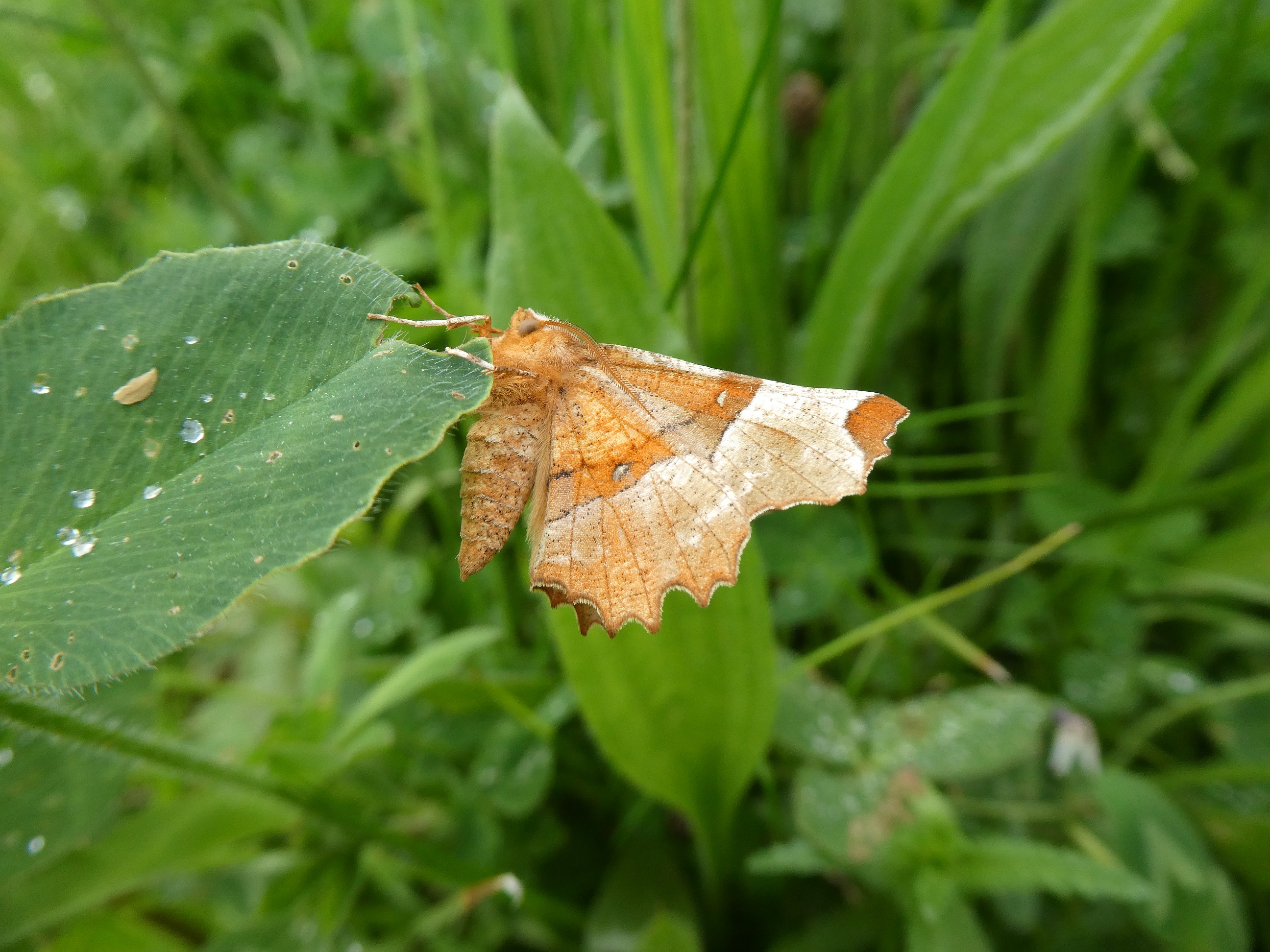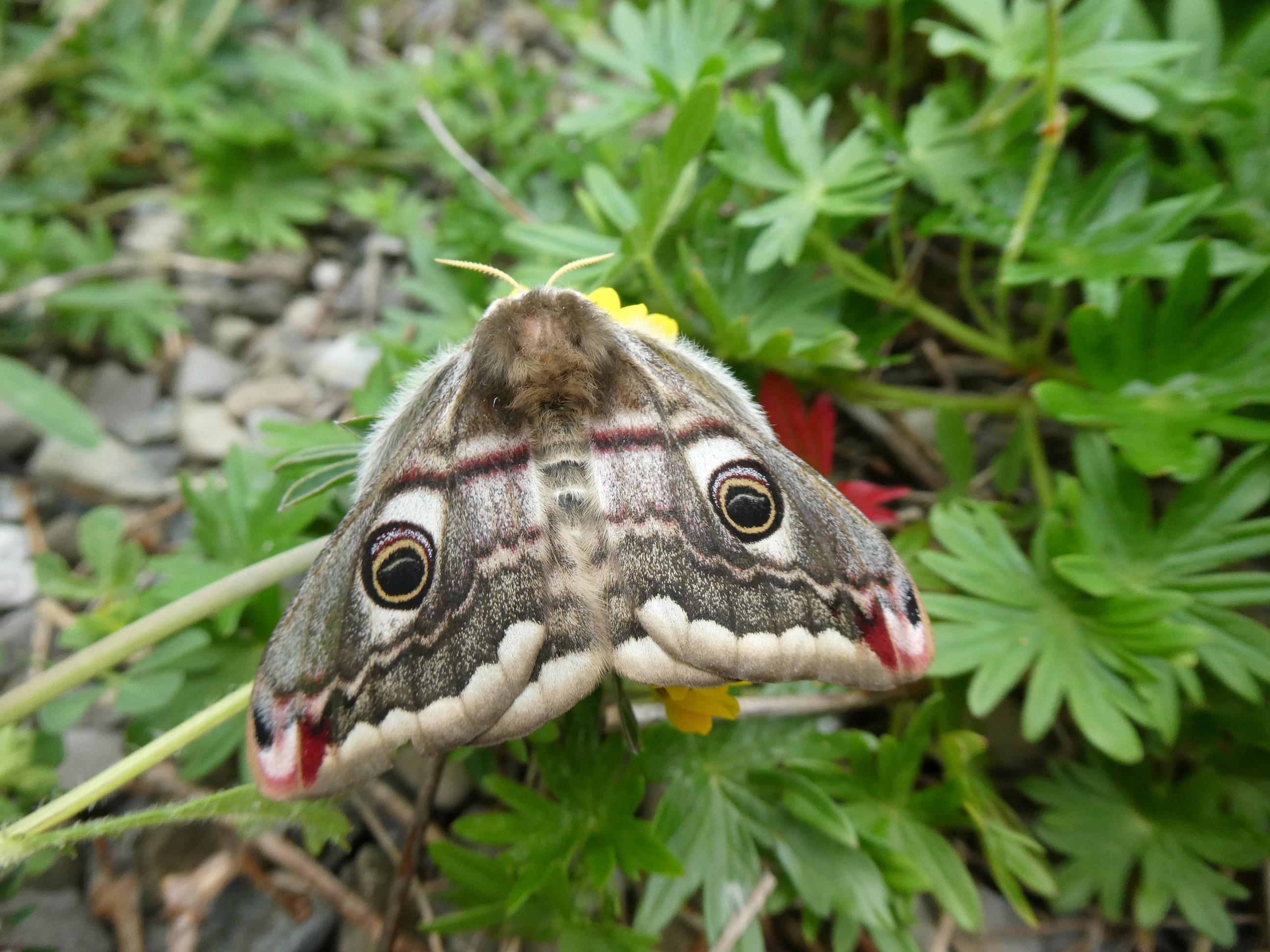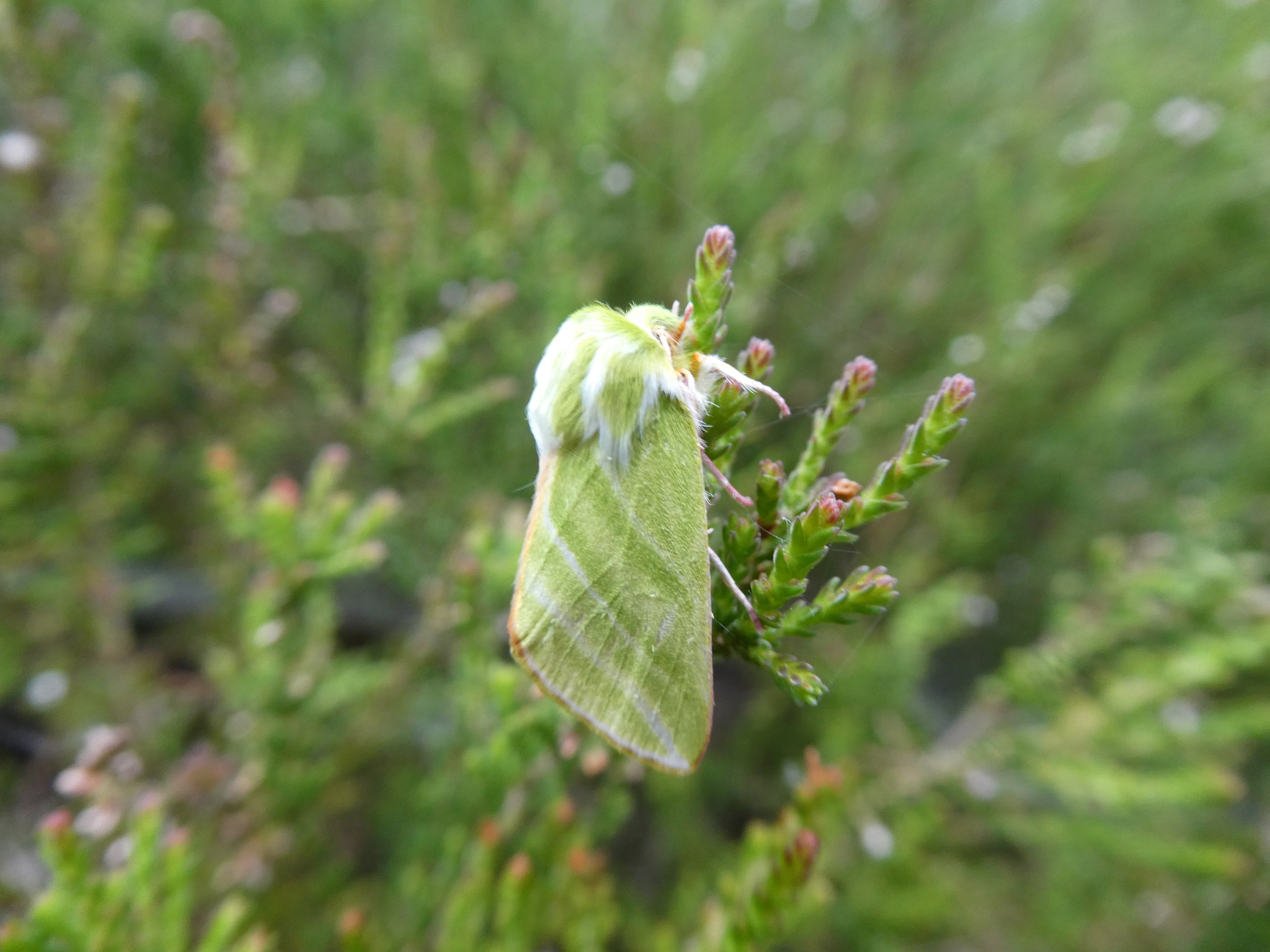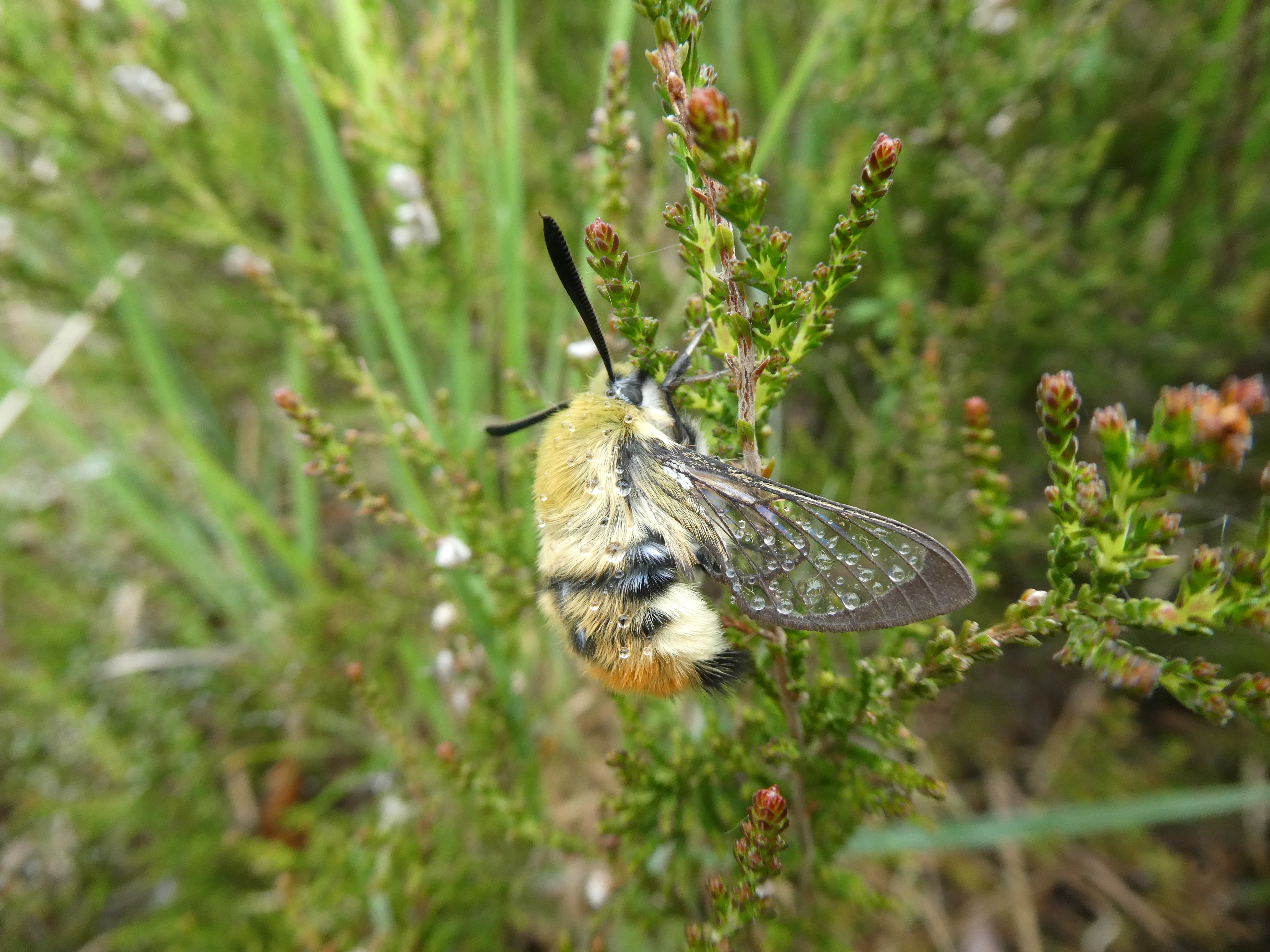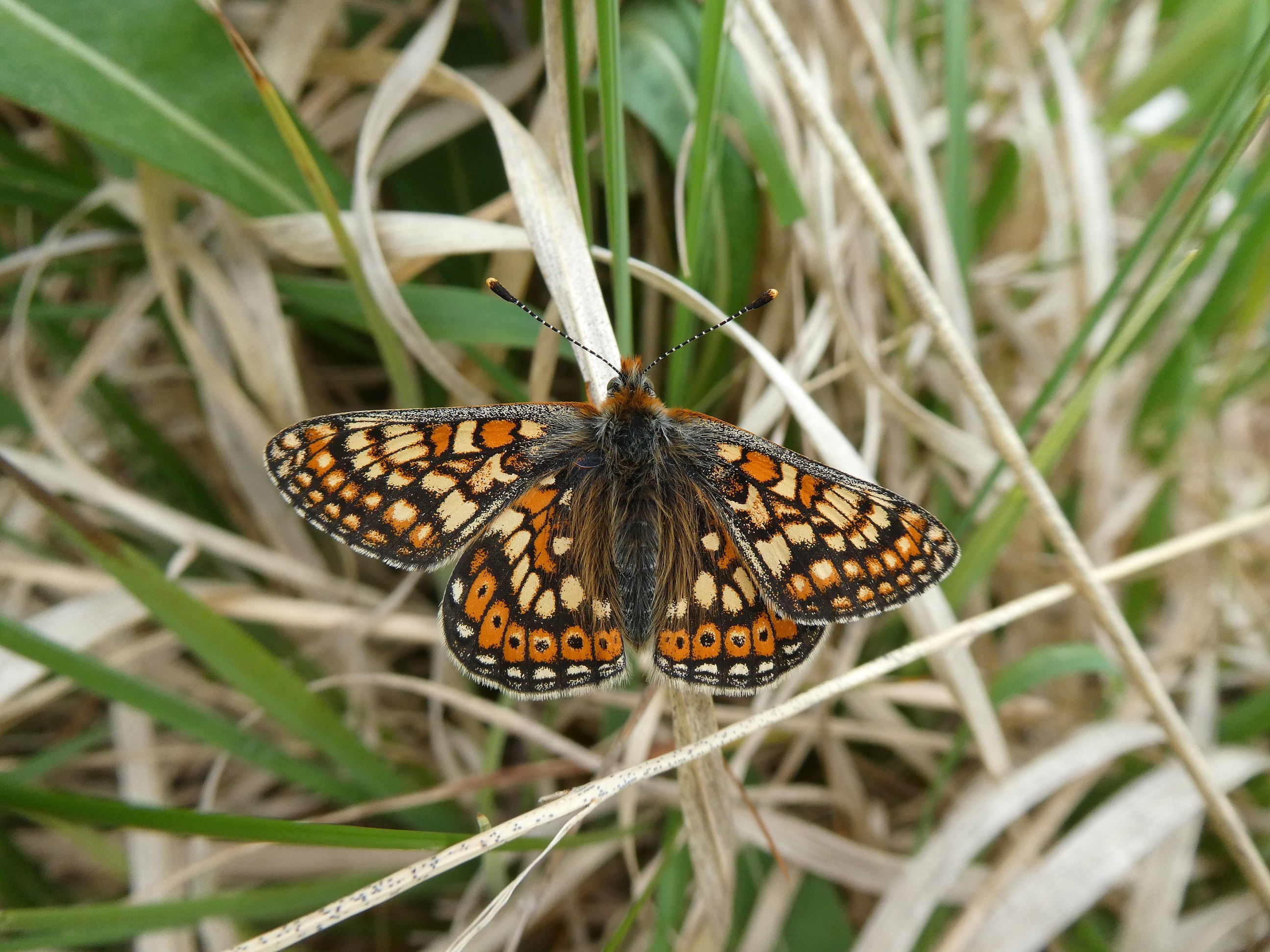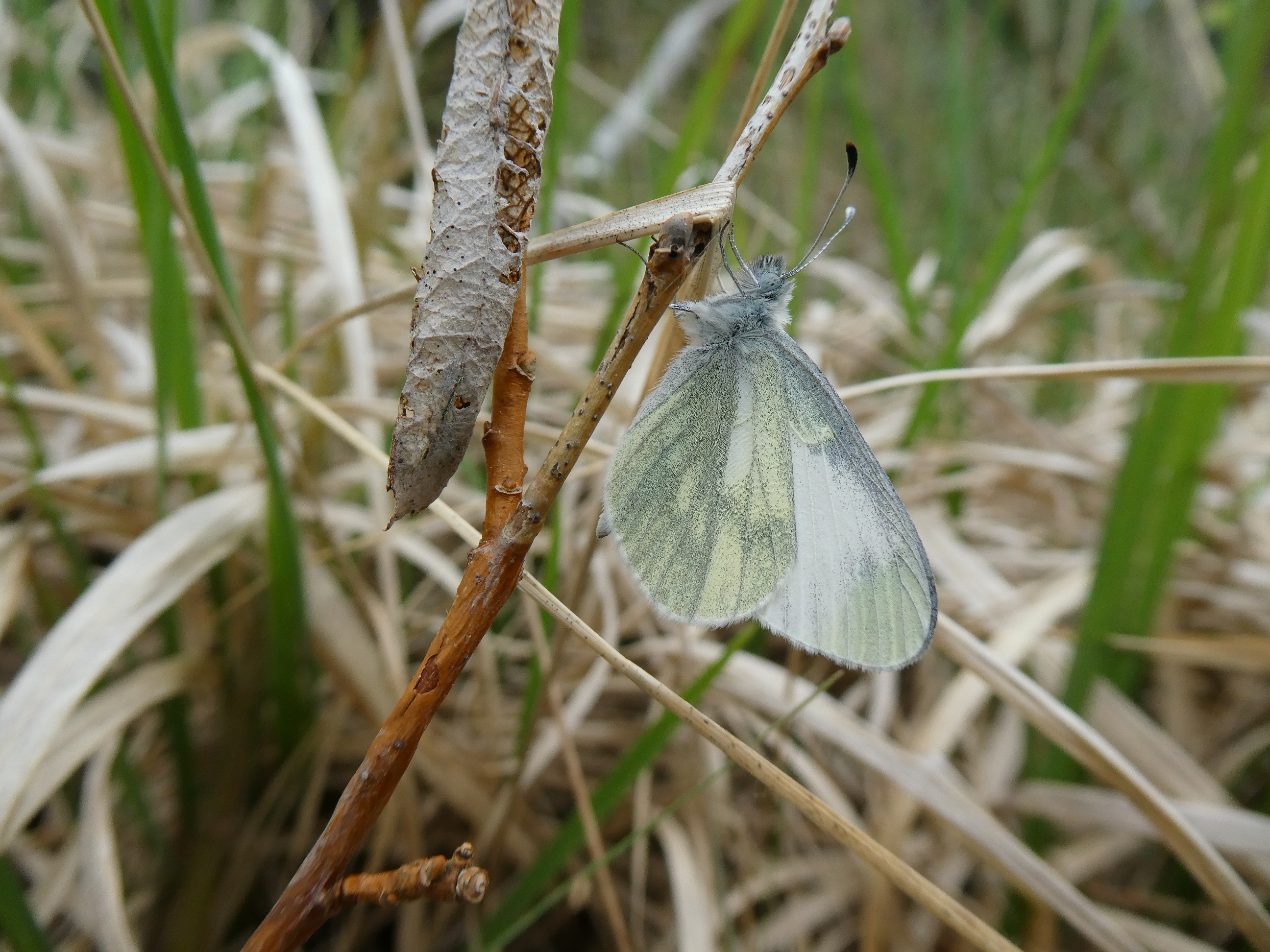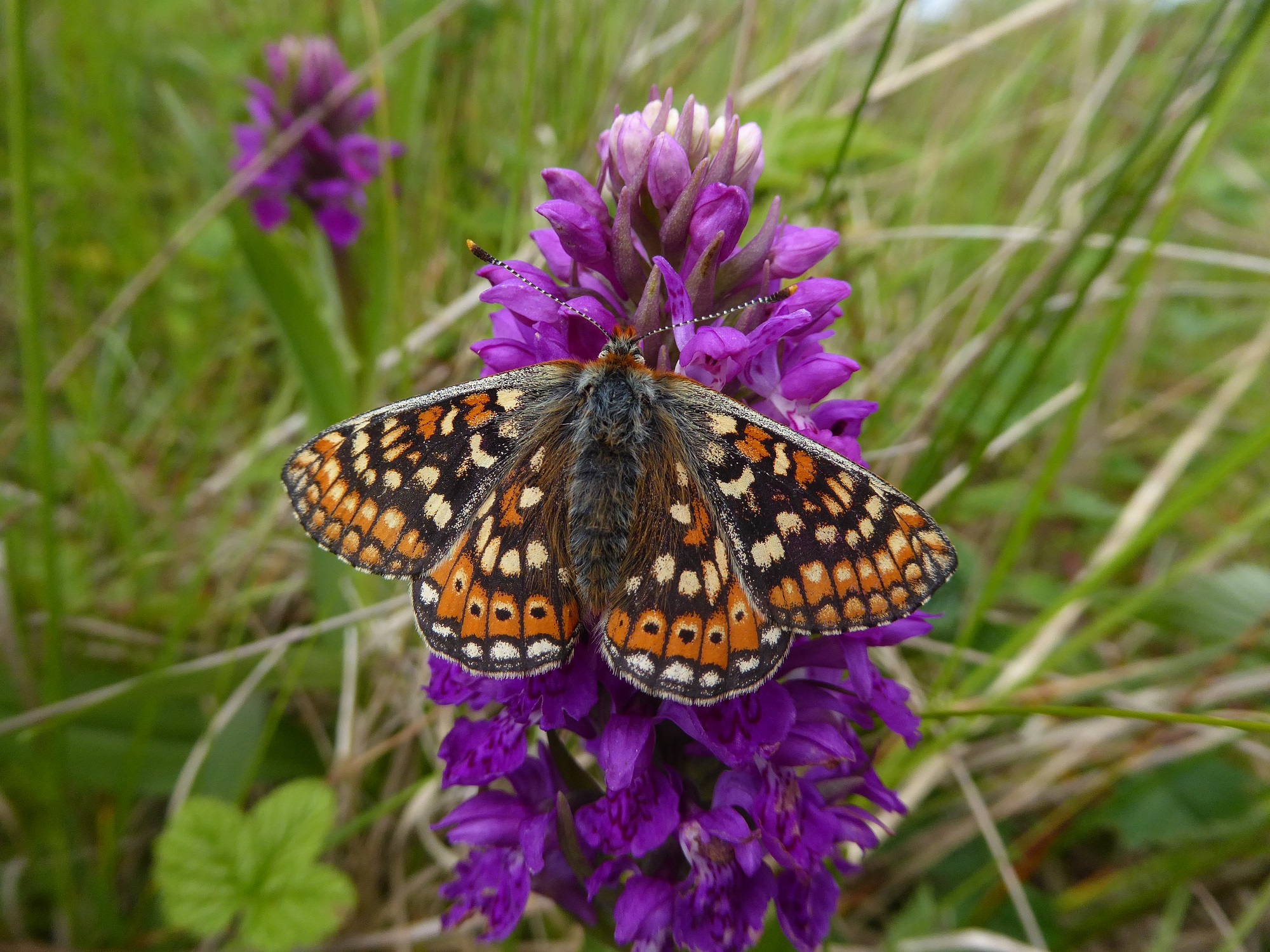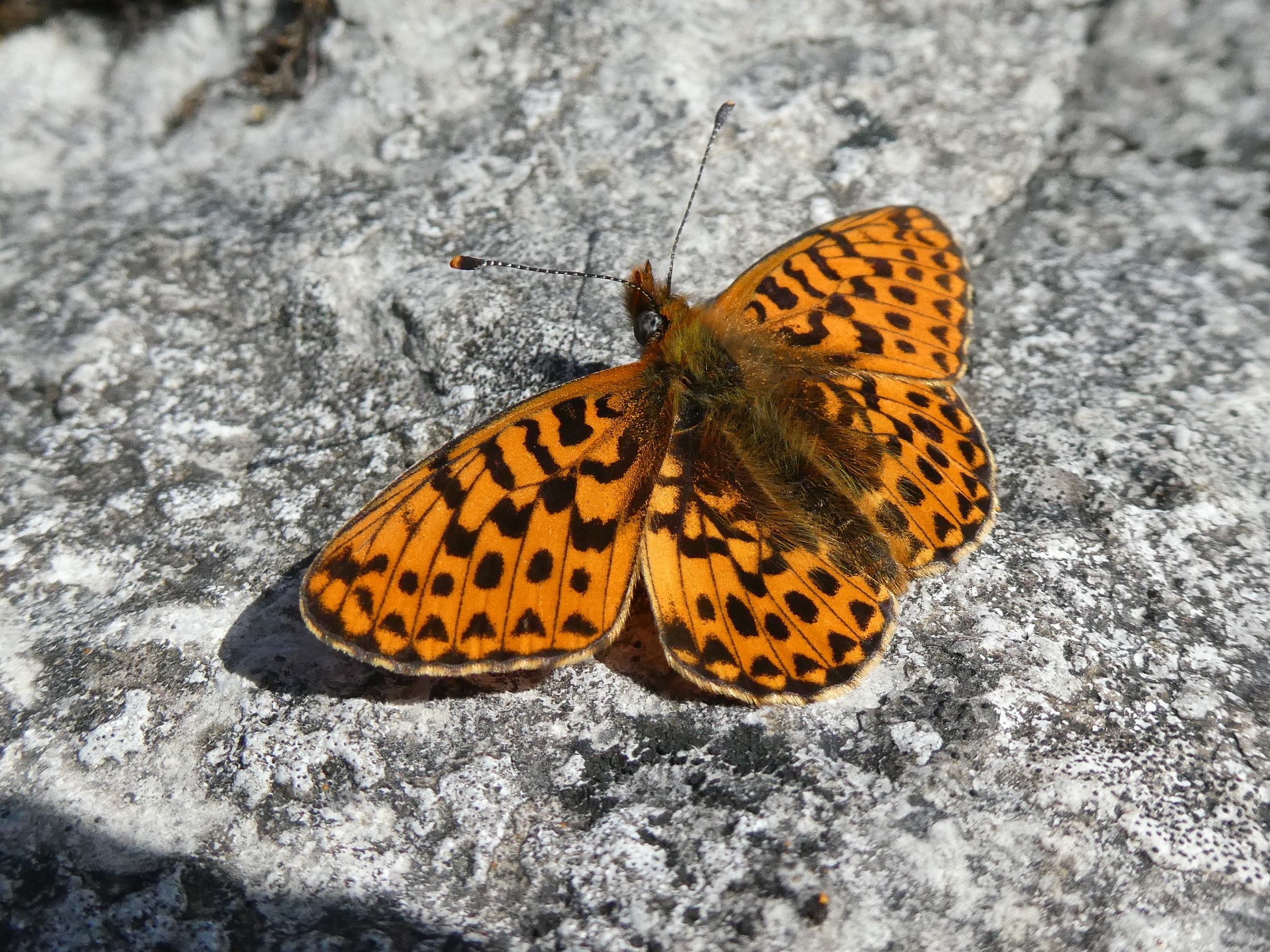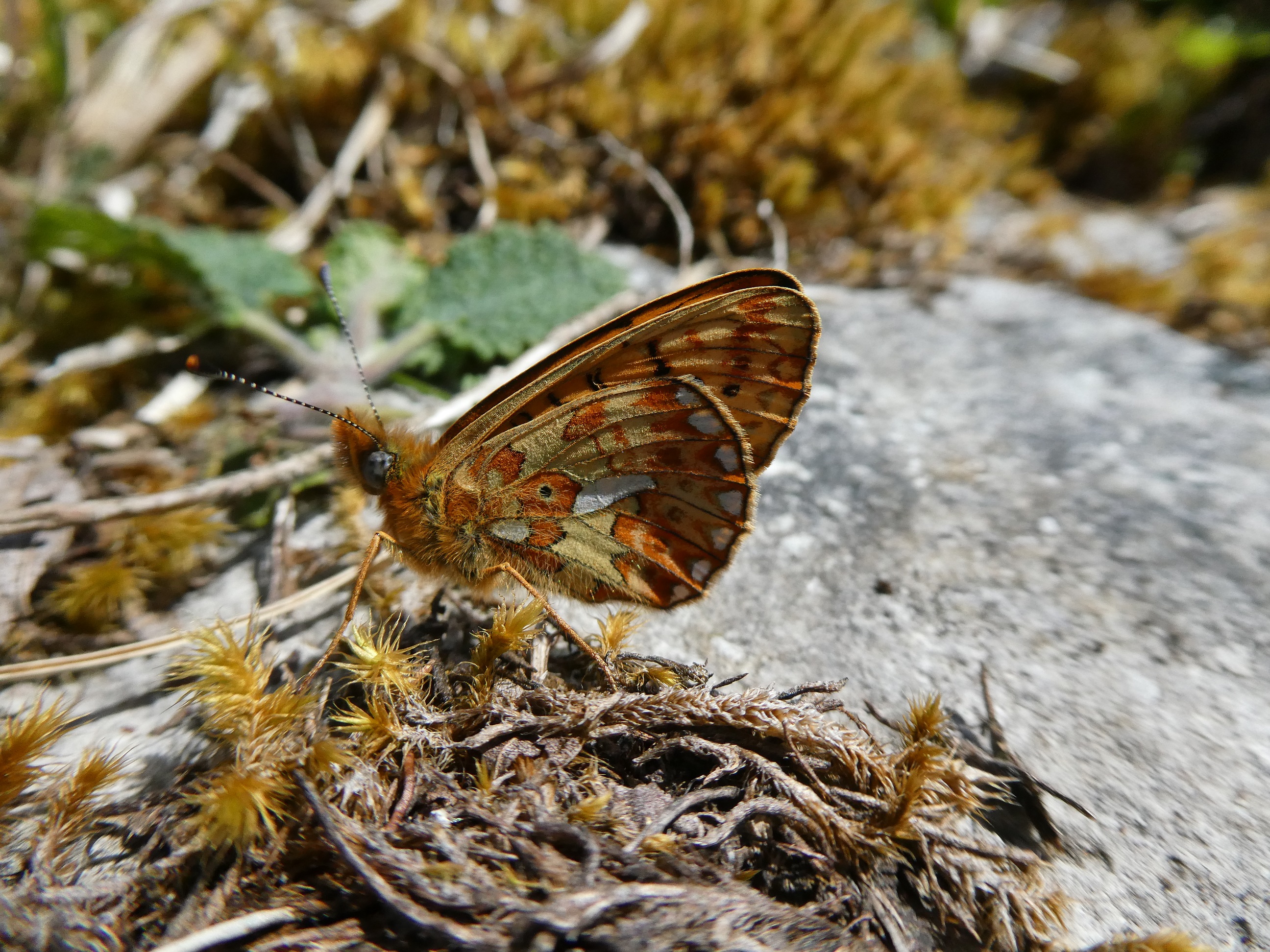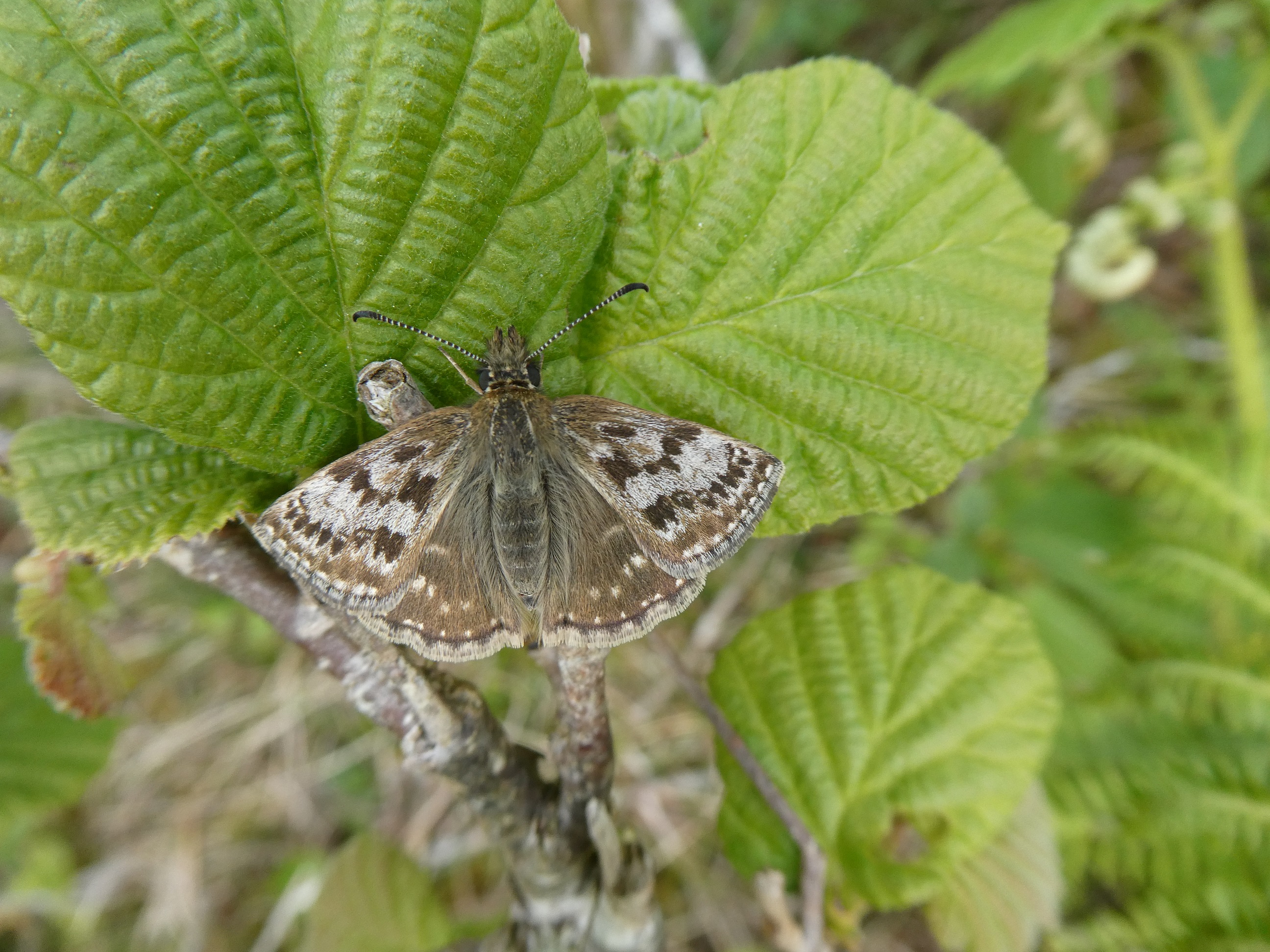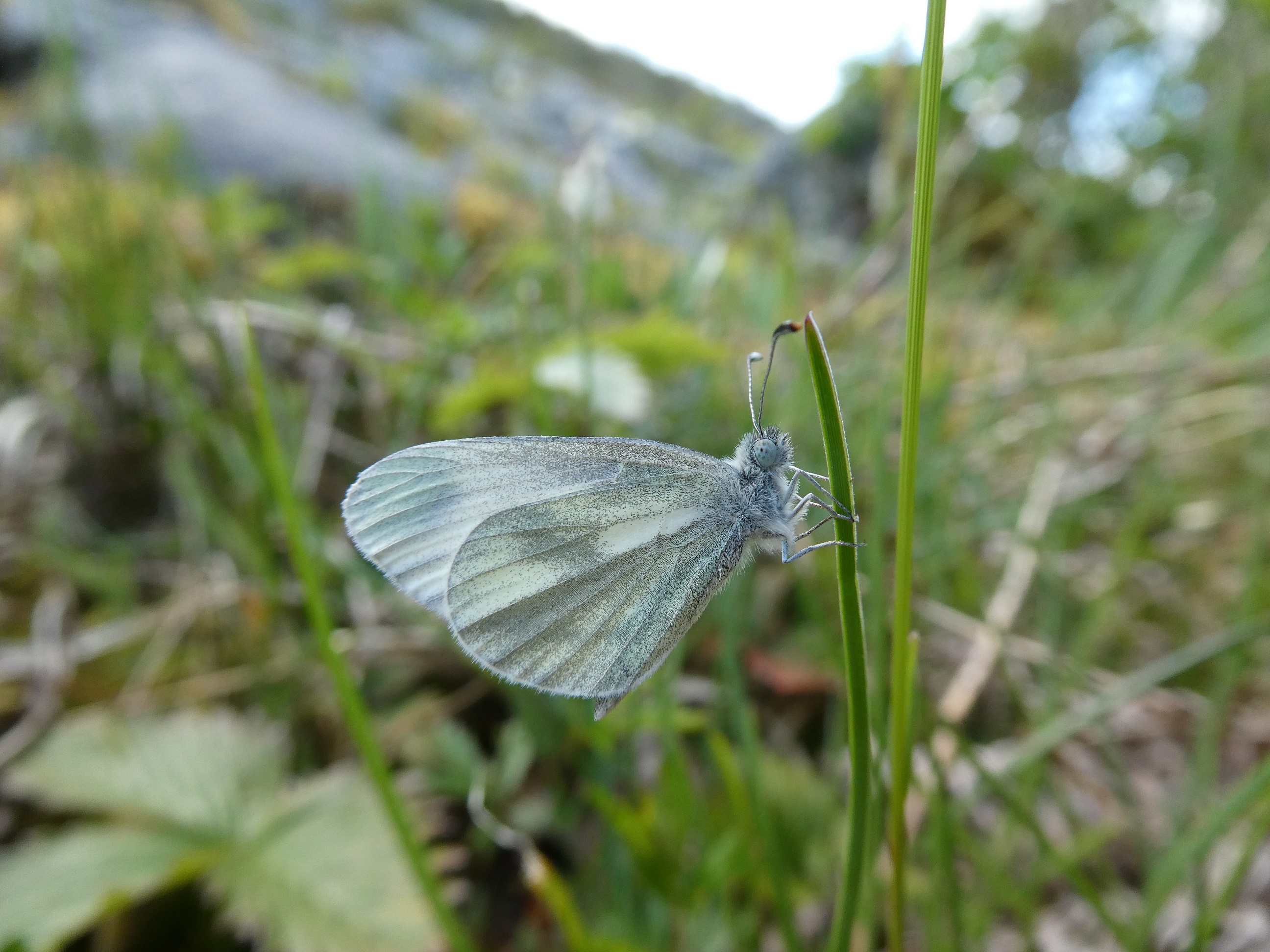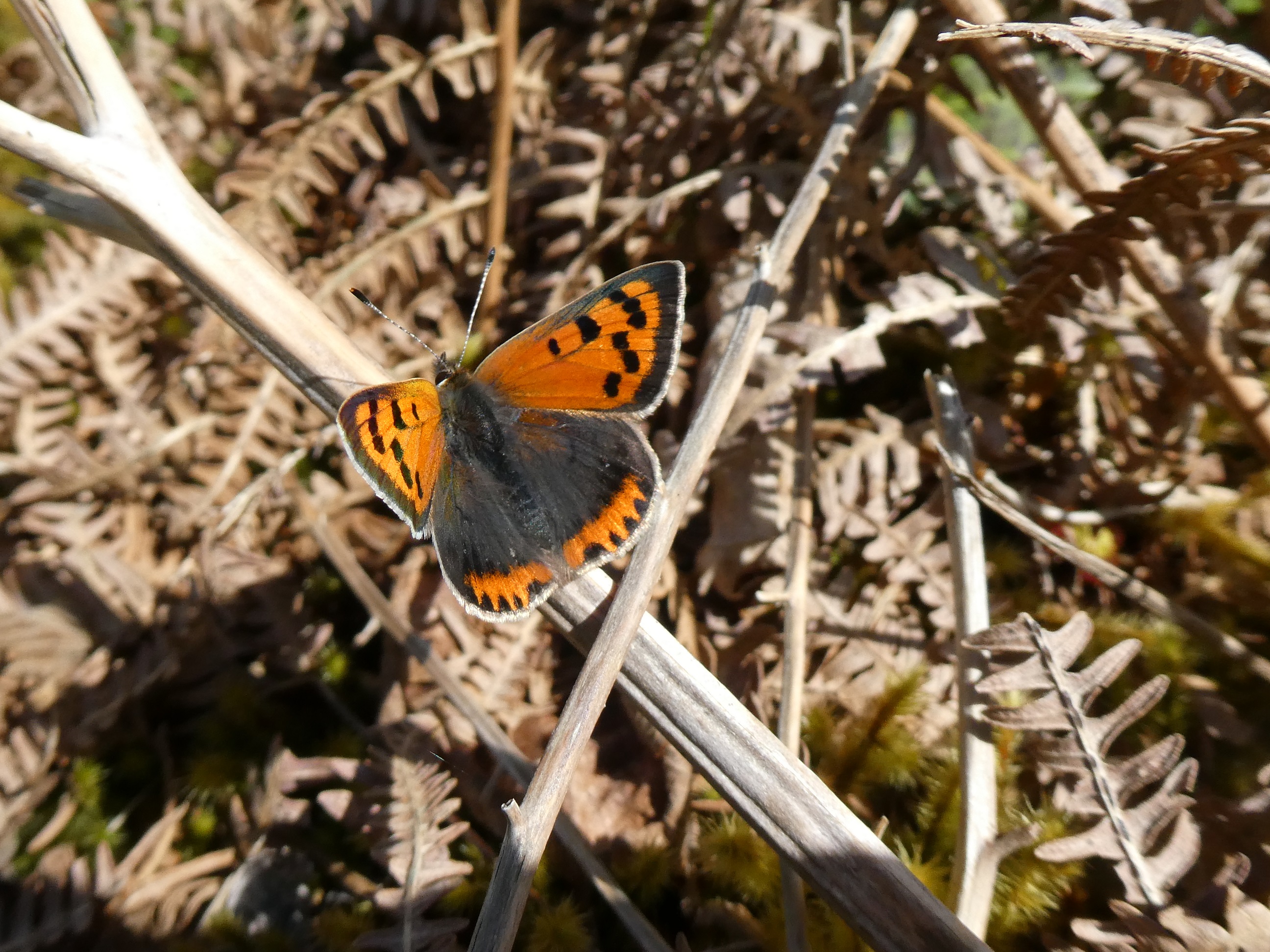Lepidoptera events depend on the right weather and moth-trapping is no exception While butterflies need direct sunshine, most moths are nocturnal and overcast nights are what these moths prefer. Even heavy rain will not deter moths provided the night is mild.
Fortunately for our efforts to trap moths (under licence from the National Parks and Wildlife Service), Friday night was calm and mild and when we arrived to open the traps on Saturday morning, we were rewarded with a great range of species and great numbers. Philip Strickland, Butterfly Conservation Ireland’s moth specialist identified the moths, including the tiny micro-moths. Among the species were Fox Moth, Emperor moth, Eyed Hawkmoth, Poplar Hawkmoth, Lesser Swallow Prominent, Pebble Hook-tip, Scalloped Hook-tip, Green Silver-lines, a rather late Common Quaker and Clouded Drab, a lovely Lunar Thorn, Muslin moths, Grey Pine, Spruce, Broken-barred and Green Carpets, to name a few. Some quite scarce species, such as Grey Birch, of which there were around six individuals, also featured. The Beautiful Snouts looked perfect, almost as if they were smartly and formally attired for an official engagement.
We got plenty of photographs especially of the larger moths, most of these proving very docile. While butterflies are so obviously striking and easy to see and admire, moths are just as elegant but harder to find. It is great to see the pleasure the moths’ beauty gave to everyone present and although this has been said on this website many times before, it is the people who attend our events who render the experience of nature even more special. Hearing the views of people regarding a moth or butterfly they have seen for the first time offers new insights and fresh excitement. For those who are familiar with a particular species, the excitement of another’s discovery refreshes enthusiasm, imbuing the familiar with new wonder.
The location of the trapping, in high-quality bog woodland under birch woodland among bilberry and heather with other habitats nearby draws in a range of moths. The intricacy and range of the markings (check the Emperor), the ingenuity of the wing outline (lovely scalloped edges on several moths), the variety of shapes and the sheer number of species all packed in together creates a fascination that is hard to absorb at one event. We hope you enjoy the photographs below.
After adjourning to the Heritage Park cafe for refreshments we set out for famous Lullymore West cutover bog to check the day-flyers. Alas, the sun was lacking; it was damp and seemed unpromising. However, careful searching did yield some good results. While not very active, we saw a number of diurnal moths and perched butterflies. Marsh Fritillary, Cryptic Wood White and Narrow-bordered Bee Hawkmoth were highlights. We had to encourage the Marsh Fritillaries to open their wings by letting them perch on warm human hands. The Cryptic Wood Whites did fly but not anything like as persistently as their typical habit. One of the advantages of butterfly hunting in very high-quality habitat in dull weather is that when a butterfly is found, you can get really close to it. In hot weather close observation is impossible.
We thank everyone who attended. I hope everyone enjoyed the experience as much as we did.
